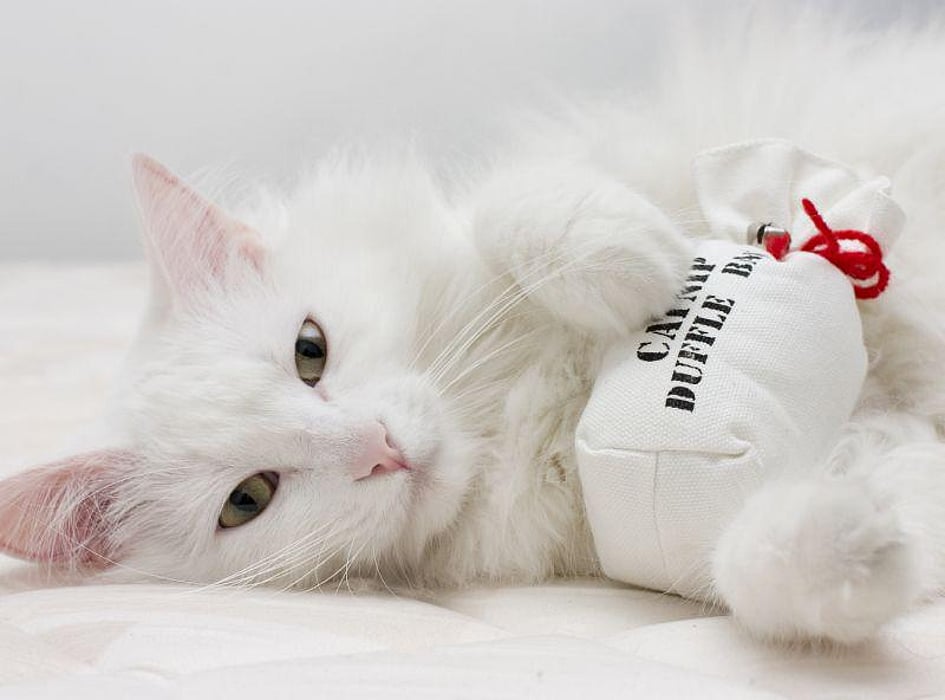Cats’ Smart, Secret Reason for Loving Catnip

WEDNESDAY, June 15, 2022 (HealthDay News) -- Catnip may do more than give cats a wicked buzz: A new study finds it may also help protect them from pests such as mosquitoes.
The leaves of catnip and its Asian counterpart, silvervine, contain nepetalactol and nepetalactone -- two types of compounds called iridoids, which repel insects.
Researchers in Japan investigated how cats' chewing and rubbing on silvervine leaves affected the release of these chemicals. The cats' mauling of the leaves resulted in an immediate 10-fold higher release of the two iridoids, compared to intact leaves.
Not only were more iridoids released, but their balance changed in ways that seemed to encourage the cats, according the study published June 14 in the journal iScience.
"Nepetalactol accounts for over 90% of total iridoids in intact leaves, but this drops to about 45% in damaged leaves as other iridoids greatly increase," explained study author Masao Miyazaki, an animal behavior researcher at Iwate University.
"The altered iridoid mixture corresponding to damaged leaves promoted a much more prolonged response in cats," Miyazaki added in a journal news release.
In previous research, Miyazaki and colleagues found that these compounds effectively repel Aedes albopictus mosquitoes. They said the change in balance of iridoids in damaged silvervine leaves boosts their ability to repel mosquitoes at low concentrations.
To determine if felines react to the two iridoids specifically, the researchers offered dishes with pure nepetalactone and nepetalactol to cats.
"Cats show the same response to iridoid cocktails and natural plants, except for chewing," said Miyazaki. "They lick the chemicals on the plastic dish and rub against and roll over on the dish."
He added that when "iridoid cocktails were applied on the bottom of dishes that were then covered by a punctured plastic cover, cats still exhibited licking and chewing, even though they couldn't contact the chemicals directly."
This shows "that licking and chewing is an instinctive behavior elicited by olfactory stimulation of iridoids," Miyazaki noted.
The next step in this research is to identify the gene behind cats' enthusiasm for catnip and silvervine.
"Our future studies promise to answer the key remaining questions of why this response is limited to Felidae [feline] species, and why some cats don't respond to these plants," Miyazaki said.
More information
There's more on catnip at the Humane Society of the United States.
SOURCE: iScience, news release, June 14, 2022
Related Posts
Could Coffee Lower a Woman’s Odds of Diabetes After Pregnancy?
MONDAY, Dec. 26, 2022 (HealthDay News) -- Women who had diabetes during...
Doctors Use CRISPR Technology to Boost Cancer Immunotherapy
THURSDAY, Nov. 10, 2022 (HealthDay News) -- Gene editing has for the first time...
Secondary Transmission of SARS-CoV-2 Low in Cohort of K-12 Schools
WEDNESDAY, March 9, 2022 (HealthDay News) -- In a cohort of K-12 schools,...
Electric Car Power Chargers Safe for Patients With Cardiac Devices
THURSDAY, April 27, 2023 (HealthDay News) -- The use of electric cars with...
